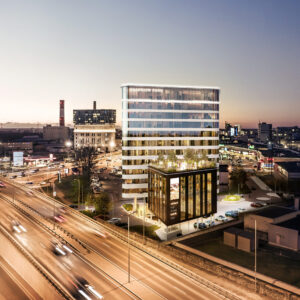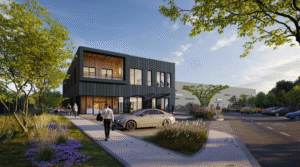The Estonian commercial real estate market, much like the world around it, is in constant flux. A sector that appears strong and attractive today can quickly become oversupplied in Estonia’s compact market. At the same time, less appealing segments may bounce back in just a few quarters—prompting both capital owners and operators to shift focus to new opportunities.
To provide clarity, here are some key trends shaping the development and investment landscape in Estonian commercial real estate:
Long-Term Office Space Demand Remains
The COVID-19 pandemic forced companies to adopt remote work and flexible models. Due to economic uncertainty, the office space market remains subdued, with many businesses still taking a wait-and-see approach. However, Estonia hasn’t experienced the same wave of vacancy as seen in markets like the U.S., where entire office buildings stand empty.
In Tallinn and elsewhere in Estonia, commuting between home and office is relatively easy compared to larger cities. As a result, many companies have begun encouraging employees to return to the office, recognizing that in-person collaboration and a creative work environment remain vital for company culture and employee loyalty.
To make office attendance appealing, the quality of the workspace—both technical and aesthetic—has become more important. Consequently, demand for modern, functional, and stylish office space is expected to continue.
Developers, however, must be mindful that Estonia is a small market with a high risk of oversupply. In addition to new developments, many newer buildings from recent years are still entering the market and often compete directly with brand-new spaces—sometimes even offering advantages.
It’s increasingly common for tenants in new buildings to renew leases at reduced space volumes compared to their original agreements. Also worth noting: many large companies have already signed long-term leases and are therefore off the market for the next few years.
Sustainability and Energy Efficiency Become Priorities
Environmental awareness is a growing trend, and commercial real estate is no exception. Sustainability has become central to development and property management.
In Estonia, we expect increased investment in green and energy-efficient buildings and the renovation of existing stock to meet climate goals and attract environmentally conscious tenants.
Improving the energy performance of buildings will soon be essential to maintaining competitiveness, particularly for older properties.
Already today, many tenants consider a minimum B-rating—ideally A-class—energy certificate a key requirement in their leasing decisions.
Integration of Technology
Technological advancements are playing an ever-larger role in commercial real estate. Smart solutions—automation, enhanced security, and efficient layouts—are becoming standard.
There is also rising demand for data analytics and AI-powered tools to help owners better understand and manage their property portfolios.
Logistics and E-Commerce Are Driving Growth
The rapid growth of e-commerce in recent years has had a major impact on logistics—and it shows no signs of slowing.
This continues to drive demand for warehouse and logistics space, making the sector more attractive for investment and development than office space.
Regional Growth Beyond Tallinn
While Tallinn remains the country’s main business hub, commercial real estate is expanding in regional centers such as Tartu and Pärnu, helping to balance national economic development.
Urban development and infrastructure investments are increasing the attractiveness of secondary cities.
In Tartu, for example, there’s a noticeable shortage of high-quality office space. Developers are willing to build, but only with pre-committed tenants.
In today’s fast-changing environment, however, tenants are hesitant to sign long-term leases too early, creating a gap between potential demand and developer confidence.
Conclusion
Investors and developers who can adapt to changing needs and market trends, and who invest in sustainability and technology, are likely to outperform the rest.
The future of commercial real estate lies in innovation, efficiency, and environmental responsibility—making this sector both a dynamic and challenging investment opportunity.




